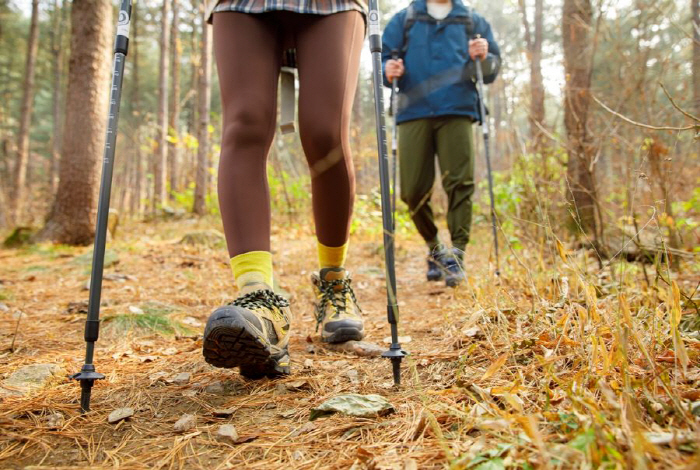Mountain downhill, knee and back joint injuries...How to reduce pain?
Nov 08, 2025
|
Along with this, the risk of safety accidents such as loss and distress is also increasing. In particular, there are many cases of back or knee pain after hiking. Much of the pain occurs more downhill than uphill, as weight is repeatedly put on joints and spines when walking downhill.
◇ 3 to 4 times the load on the knee joint
It is known that when walking through the inner membrane, it is applied to the knee joint about three to four times higher loads than the flat surface. In this process, pressure is concentrated on the cartilage surface, and the support function of the ligaments and muscles around the knee is reduced, which can lead to worsening degenerative knee arthritis. Middle-aged people with thin cartilage should be careful if their knees swell or feel hot after hiking.
◇Disk pressure increases as waist bends forward
If you come down with your waist bent forward during dissection, the pressure on the intervertebral disc (disc) increases, which can increase the risk of lumbar disc escape. If you experience radiating pain from the buttocks to the legs, numbness in the legs, and pain when moving, it is better not to pass over to simple muscle pain.
When you go down, you can reduce the load on your back just by straightening your back, taking your feet slowly, and reducing your stride.
Heo Jae-won, director of the Barunseang Hospital Joint Center (Orthopedic Surgeon), said "Reducing stride and lowering the center of gravity when going down are the key to preventing injuries rather than when going up during hiking," adding "It is effective to use a climbing stick to disperse the weight load when going down." Sticks use their arms to reduce the strength of their knees and waist."
◇How to deal with pain after walking
If pain occurs after hiking, it is preferable to calm the inflammation with a cold compress within 48 hours rather than using a hot compress or massage immediately. After that, if the pain is reduced, it is helpful to reduce the joint burden by stretching the muscles of the front and back of the thigh and the hip.
In the case of back pain, it is more effective to avoid excessive back bending (over-extended) stretching and to proceed with knee and pelvic flexibility recovery exercises first.
However, if the pain lasts for more than a week or the pain intensity gets worse, it is recommended to visit a hospital for accurate diagnosis and treatment.
This article was translated by Naver AI translator.














